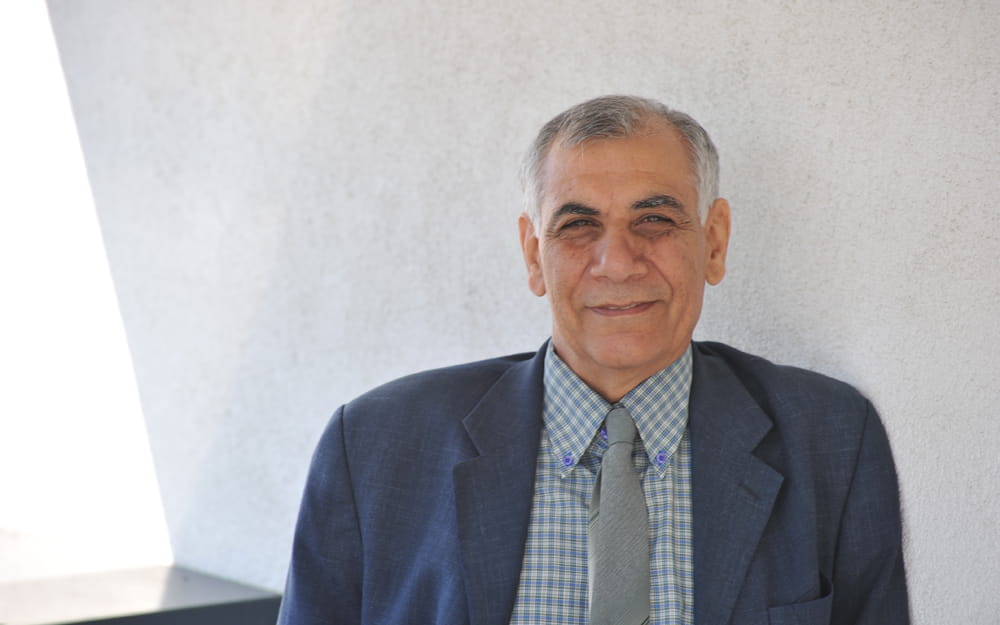Professor Mohammad Ghanbari [1948-2024]

Tribute by his son Soroush Ghanbari
Emeritus Professor Mohammad Ghanbari (IEEE Life Fellow), a leading British-Iranian scientist much loved and respected by all who knew him, has passed away. He was 75 and had been suffering from ill health for several years.
Professor Ghanbari spent 30 years at the School of Computer Science and Electronic Engineering, at the University of Essex, a large proportion of his research career and the place where many of his most significant contributions were made. He was highly acclaimed internationally in the field of video networks, with a focus on video compression and video streaming.
Known as Ali to his friends, he was born in 1948 in Saveh, Iran. From an early age, he excelled in science and mathematics, preparing him for his future career. He graduated from Aryamehr (Sharif) University of Technology in Tehran, Iran, with a BSc degree in Electrical Engineering in 1970 with distinction, an MSc in Telecommunications, and a PhD in Electronics, both from the University of Essex, in 1976 and 1979 respectively.
He was honoured to see his PhD work on the coding of broadcast TV with the Discrete Cosine Transform become the basis for all the standard codecs. As part of his PhD work, he was the first to implement a real-time video codec for broadcast TV in 1979. However, he was internationally best known for his pioneering work on layered video coding, now known as SNR scalability in the standard video codecs, which earned him the IEEE Fellowship in 2001. Such a method is already implemented in all standard video codecs.
After ten years of working in radio and television broadcasting, he started his academic career in 1986 as a Research Fellow at the Department of Electronic Systems Engineering, at the University of Essex, working on video coding for Packet Networks. He was then appointed as a Lecturer in 1988 at the same department and was promoted to Senior Lecturer and then Reader in 1993 and 1995, respectively. He was appointed a Professorial Chair in 1996.
He was the author or co-author of over 800 publications, many of which have had a fundamental influence in the field of Video Networking. During his academic career, he was very active in research, and his works were published in 340 prestigious journal papers, 460 conference publications, 13 registered patents, and 23 book chapters. He authored/co-authored eight books on video coding, and supervised over 50 PhD students.
“Professor Ghanbari has been a mentor, dedicated research collaborator, and an unwavering source of inspiration in the pursuit of advancing the field of visual communications that unite people like no other technology. During my tenure at the University of Essex, as his first PhD student from 1990 to 1993, he dedicated himself to propelling the university's visual communications research to unprecedented heights on the global stage. Professor Ghanbari approached his research with a commitment to practical applications, never afraid to confront even the most daunting engineering challenges with a resolute 'can-do' attitude. He was a prolific academic but also a compassionate soul and a cherished friend. The void left by his departure will be keenly felt by all who were fortunate enough to cross paths with him, and his legacy will endure through the lives he touched.”
Dr Vassilis Seferidis, CEO of TEO Limited
He received numerous prestigious awards and prizes, including the A.H. Reeves prize for the best paper published in the 1995 proceedings of IEE on the theme of digital coding, and the Rayleigh prize for his book An Introduction to Standard Codecs, published by IEE press in 1999, as the Year 2000 Best Book Award. He was the first winner of 14th International Khwarizmi award in 2001.
He was an organising member and keynote speaker at several international conferences and workshops. He was General Chair of the 1997 international workshop on Packet Video, and Guest Editor to several journals in special issues on multimedia technology and applications. He was one of the founding Associate Editors of IEEE Transactions on Multimedia (IEEE-T-MM, 1998-2002) and represented the University of Essex as one of the six academic partners in the Virtual Centre of Excellence in Digital Broadcasting and Multimedia in UK (1996-1999). He was awarded the Life Fellow of IEEE in 2014. In 2021 he was elected a Fellow of Asia-Pacific Artificial Intelligence Association (FAAIA).
His son Soroush said: “I always watched my father solving problems for his research work. He went to sleep every evening thinking about a problem to be resolved, and when he woke up in the morning, he had the solution! My father’s passion was research and publications. He continued his research work till the last days of his life, and this is what kept him alive.”
He retired from University of Essex in 2011. At the time of his retirement, the title and status of Emeritus Professor were conferred upon him. After retirement, he continued to serve in his research field and collaborated with leading overseas universities, including Sharif University of Technology and University of Tehran. During the COVID outbreak, he did consultancy work for various multinational technology companies. He also worked remotely for Christian Doppler Laboratory ATHENA, Alpen-Adria-University of Klagenfurt, Austria. His profound knowledge, insightful input and invaluable guidance played a pivotal role in the success of their leading research lab.
“Professor Ghanbari was an amazing mentor and researcher, making a significant impact on academia and video communication. His dedication to teaching and guiding students set him apart, leaving a lasting legacy. Personally, I'm grateful for the valuable lessons I learned from him. Wherever I went, I met successful individuals who had been mentored by Professor Ghanbari, showcasing his exceptional mentoring skills. He was a key figure in the video communication community, and his absence will be deeply felt. Rest in peace, Professor Ghanbari, your influence will continue to inspire many.”
Dr Hadi Amirpur, Research Fellow, Chrisitian Doppler Laboratory ATHENA, Alpen-Adria-University of Klagenfurt, Austria.
Professor Ghanbari is survived by his wife Sorour, son Soroush and daughter Shirin.
May he rest in peace.
Tribute from David Crawford
It is with great sadness that I have learned of the recent passing of Professor Mohammed “Ali” Ghanbari. I first met Ali in the 1970’s, when we were both studying for our PhDs. We were members of the Don Pearson Image Coding group … working with illustrious colleagues like Tim Dennis, Hugo Gaggioni and others.
This was an exciting time of invention and progress in the new tech area of image coding and compression. I had many interesting and stimulating conversations with Ali, bouncing new ideas and thoughts off each other. As the international collaboration in MPEG video compression standards progressed, Ali became a respected guru across the world. His book on video coding standards, published by the IET, became the vade mecum for all aspiring picture coding engineers.
Since those early days as researchers and lecturers at University of Essex, we have kept in touch, and worked together on occasion … once producing a landmark study for Ofcom on future video coding bit rates, and then through the years incorporating his ideas into conferences that I was producing. His deep knowledge and understanding of coding from the most basic principles, meant that I often felt slightly over-shadowed in his presence; but then his good humour and open friendship would quickly dispel that feeling.
I was not able to meet up with Ali on a visit to Iran a few years ago, due to his illness … something that I truly regret now. Ali, you will be sorely missed as one of the great experts in picture coding, a true “gentleman academic”, and a good friend.
David Crawford.
University of Essex / Ravensbourne University London.
(erstwhile head of BT Video Coding Group).


